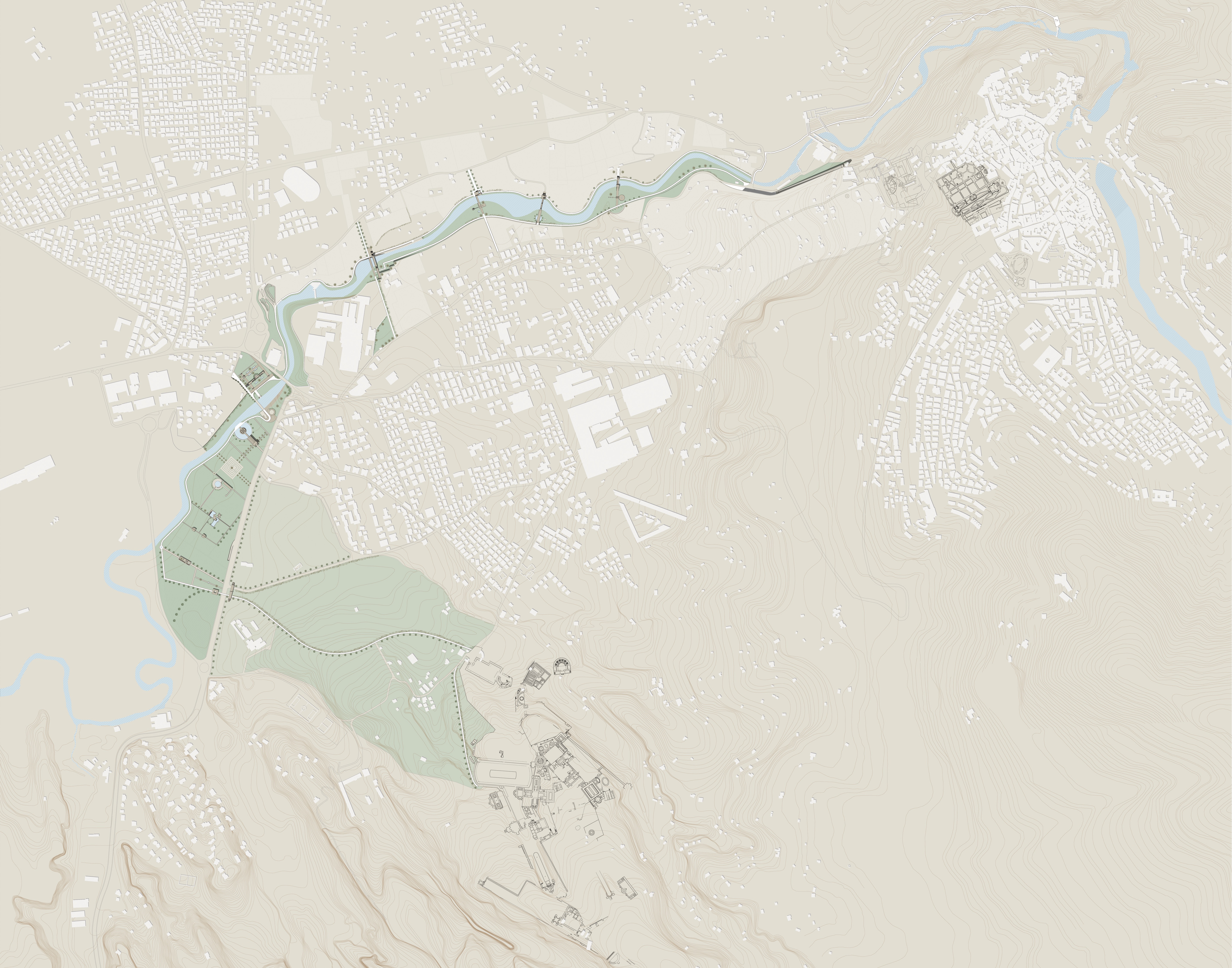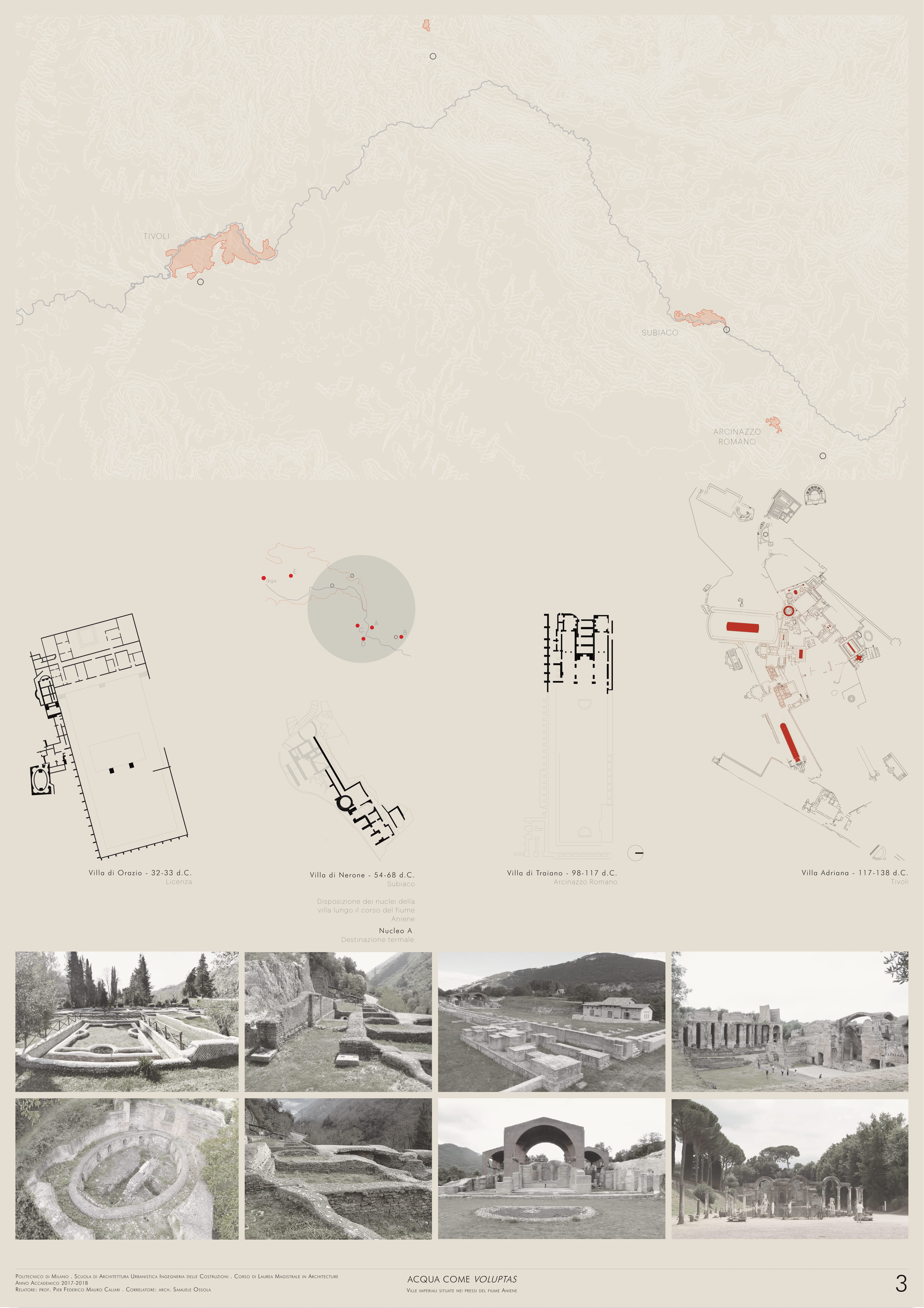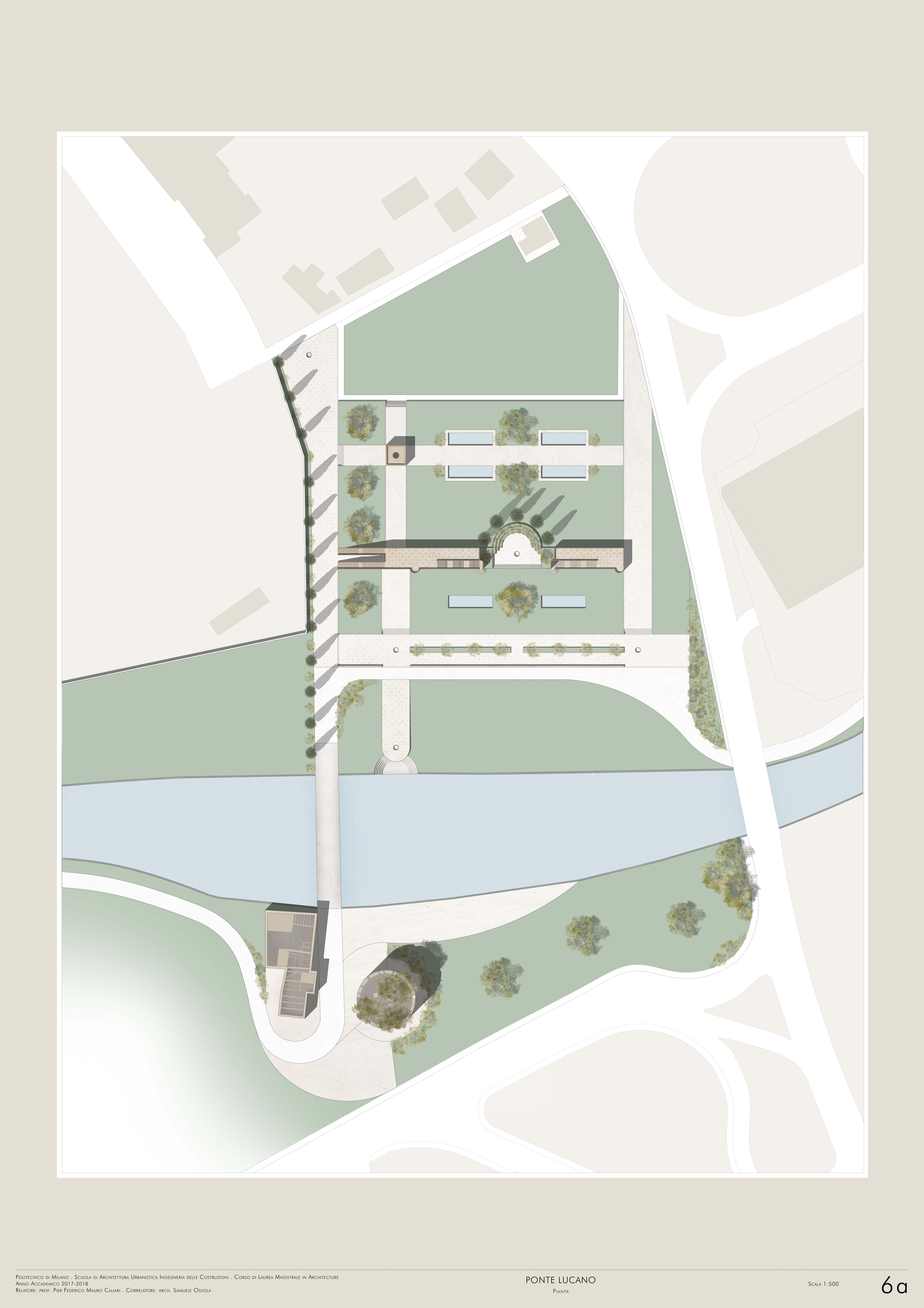Tesi di Laurea

TRA VILLA ADRIANA E VILLA D’ESTE.
Elementi di connessione tra due siti UNESCO lungo le sponde dell’Aniene
8Candidato
Alessia Rampoldi
Relatore
Pier Federico Caliari
Correlatore
Samuele Ossola
Anno Accademico
2017/2018
La tesi ha come oggetto la realtà di Tivoli, segnata dalla fortissima presenza di architetture storiche che ne disegnano e definiscono il paesaggio ed il territorio che ospita due siti patrimonio mondiale dell’UNESCO, la grande Villa Adriana che modella il territorio a valle e Villa d’Este con il suo meraviglioso giardino.
Il terzo elemento che connota l’area tiburtina è il fiume Aniene: la sua presenza, fondamentale per comprendere la storia di Tivoli e di tutte le opere che fanno di essa una grande città, è oggi inconsistente e occultato all’interno del paesaggio urbano causa l’incuria e il progressivo abbandono delle sue rive. Il progetto, mettendo in atto una strategia per la valorizzazione del patrimonio, propone la riconnessione del fiume al territorio, al paesaggio e alla città attraverso un sistema di ponti, ridisegno dei bordi, canalizzazione e collegamento tra i due siti UNESCO lungo l’Aniene.
If we immerse into the present of Tivoli we cannot help but get impressed by the greatness of its history and by the importance of the events that involved this city. The signs of its past lay into the extraordinary architectures that draw the landscape: Tivoli hosts two places that joined the list of the World’s Heritage Sites UNESCO, Villa Adriana and Villa d’Este, and its streets are stud by many monuments such as the Santuario di Ercole Vincitore or the
modern ruins which define the urban profile. Every historical presence is linked to the others by only one element: the Aniene. The presence of the river, such fundamental to understand the history of Tivoli, nowadays is inconsistent and hidden into the urban landscape because of the progressive decay of its borders. The project leads to the re-meaning of
the river Aniene and to its re-connection to its own territory, landscape and city.
The project, implementing architectural and landscape strategies for the enhancement of the cultural Heritage, proposes the reconnection of the river to the territory, the landscape and the city through a system of bridges, redesign of the land and the borders, canalization, water flow control and
connection between the two UNESCO sites along the course of the Aniene.














